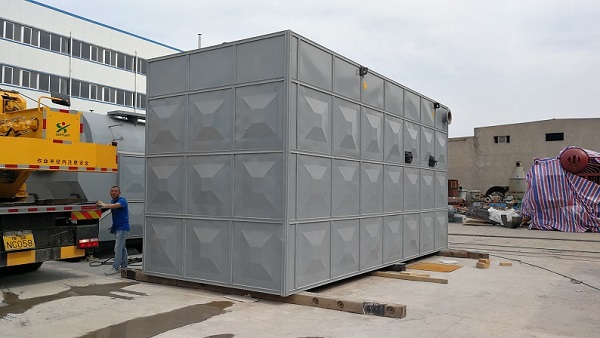Guide: Biomass heat-conducting oil stove is not a popular stove, it is commonly used in large factories, and many people may not have seen it. The so-called biomass boiler is a boiler that uses biomass energy as fuel
Biomass heat-conducting oil stove is not a popular stove, it is commonly used in large factories, and many people may not have seen it. The so-called biomass boiler is a boiler that uses biomass energy as fuel. Common biomass includes trees, flowers, manure, and organic wastewater. Its energy originally comes from solar energy, so biomass energy is a kind of solar energy. The stove is characterized by environmental protection and fuel saving. It is a boiler that is currently recommended by the society. Biomass boilers are also classified into biomass heating stoves, biomass cooking and heating dual-use stoves, biomass hot water boilers, and biomass CNC boilers. And so on, biomass fuel is high-density pellets or lump fuels that are processed from agricultural and forestry wastes. Boilers that use biomass energy as fuel are called biomass boilers, which are divided into biomass steam boilers and biomass hot water. Boiler, biomass hot blast stove, biomass heat conduction oil stove, etc. To

Types of biomass boilers
At present, biomass boilers are roughly divided into two categories according to their uses: one is biomass thermal energy boilers, and the other is biomass electric power boilers.
In fact, the principles of the two are basically the same. They both obtain energy by burning biomass fuel, but the first one directly obtains heat energy, and the second one converts heat energy into electrical energy. Among the two types of boilers, the first one is the most widely used and the technology is relatively mature.
If you continue to subdivide, the first type of boiler-biomass thermal energy boiler, can also be divided into three categories:
The first category: small biomass thermal energy boiler. This kind of boiler uses solidified or gasified biomass fuel to provide thermal energy in the form of hot water. Its advantages are small size, simple structure, and low price; its disadvantages are large energy loss, large fuel consumption, and low thermal energy supply. Unable to meet users with large thermal energy demand, this type of boiler aims to provide heating and domestic hot water supply for single rural households.
The second category: medium-sized biomass thermal energy boiler. This type of boiler mainly uses solidified biomass fuel to provide hot water or steam. Its advantages are relatively mature technology, low energy loss, and strong thermal energy supply capacity; the disadvantage is that some boiler fuels are coking and the supporting design is unreasonable.
The third category: large-scale biomass thermal energy boiler. There is no actual product of this kind of boiler, mainly because the existing technology is not perfect, and the national policy for biomass substitution of coal is not sound, therefore, it only stays in the concept. What it emphasizes is a thermal energy project with centralized management and centralized control. The boiler is only one of the equipment to ensure the normal operation of the entire biomass thermal energy project. Therefore, it requires fuel, combustion technology, supporting technology, and related policies. Very high.
Features of biomass boiler products:
1. Energy saving and environmental protection: The fuel used by the boiler itself belongs to the new type of biomass fuel supported and promoted by the state, which is an energy-saving and environmentally friendly renewable resource, with a wide range of sources and economic benefits. The Root Biomass Gasification Hot Water Boiler uses the reasonable internal structure design of the boiler to gasify and completely burn the biomass fuel with maximum efficiency. Equipped with a dedicated dust collector, it achieves the effect of smokeless and complete combustion. Its operating cost is one-sixth of that of electric boilers, and one-third of that of oil-fired and gas-fired boilers. To
2. Control system: It is equipped with a microcomputer control system with functions such as temperature setting, cycle control and fault alarm. It is simple and convenient to use and operate.
3. High degree of automation: the use of advanced screw rotation drive automatic feeding device and burner automatic ignition system, only need to fill up the storage bin at one time, no need to refuel for 1-3 days. It greatly reduces the labor intensity of the furnace workers and makes the boiler use more humane.
4. Safety: The biomass gasification hot water boiler is a normal pressure hot water boiler, which is operated under normal pressure, and does not require annual inspection and professional furnace operators. Its reasonable boiler structure and special combustion method solve the coking and blockage phenomenon from the source. To
5. The hot-dip galvanizing process inside the hot water boiler can provide clean domestic hot water. To
6. The overall heat preservation of the boiler reduces heat loss and improves the thermal efficiency of the boiler. To
7. The overall structure of the boiler is compact, small in size, there is no need to set up a tall chimney without a draft device, the installation is simple, the failure rate is extremely low, and there is no noise. To
8. After the fuel is completely burned, there is only a small amount of powdery ash residue, which is easy to handle. Biomass boiler is a kind of boiler that burns biomass briquette fuel. It runs environmentally friendly and saves fuel. It is a boiler that the society now advocates. There are also many types of biomass boilers, including biomass heating stoves and biomass cooking and heating. Furnaces, biomass hot water boilers, biomass numerical control boilers, etc. Biomass fuel is a high-density pellet or block fuel formed by processing agricultural and forestry wastes.




























